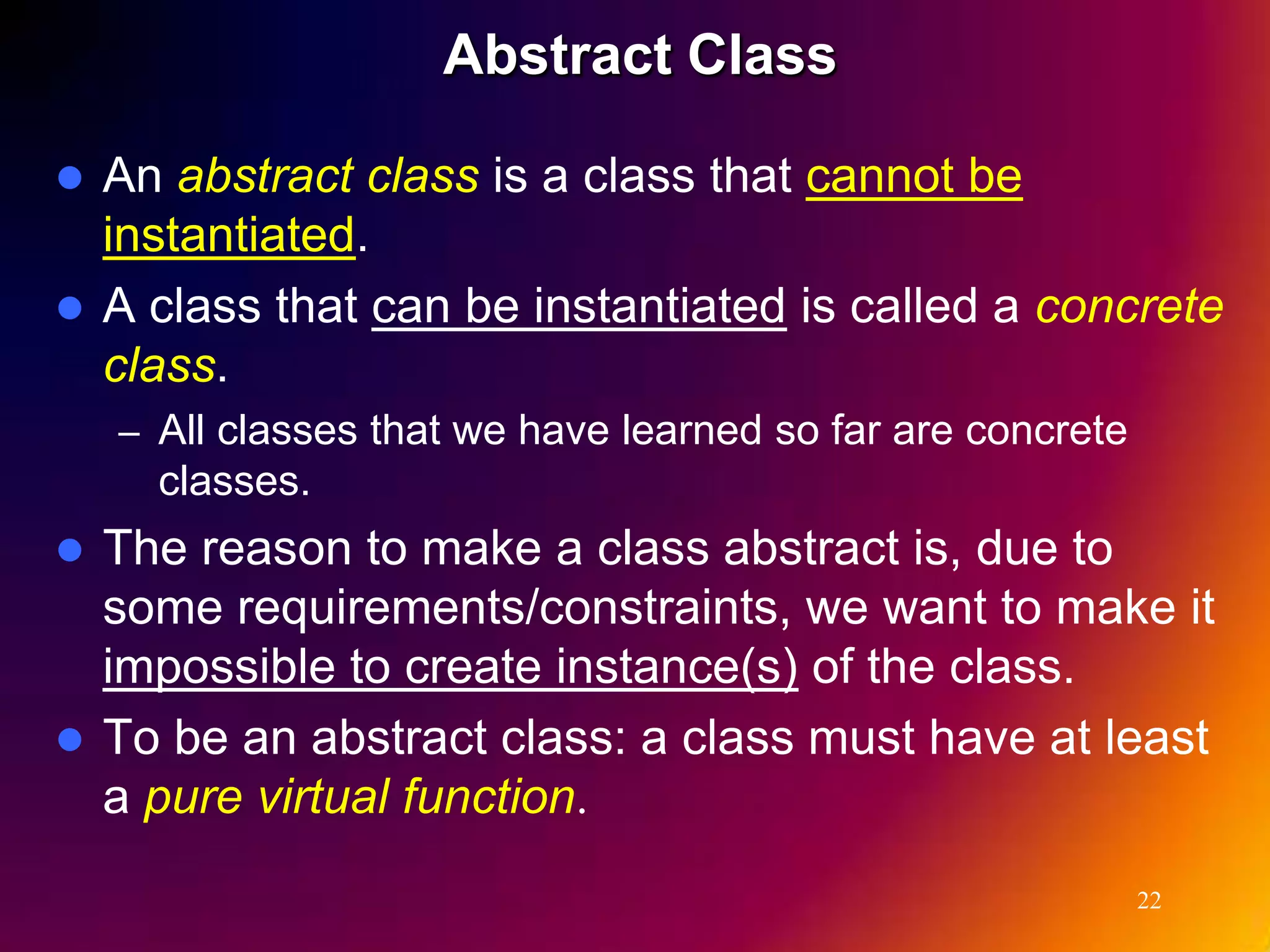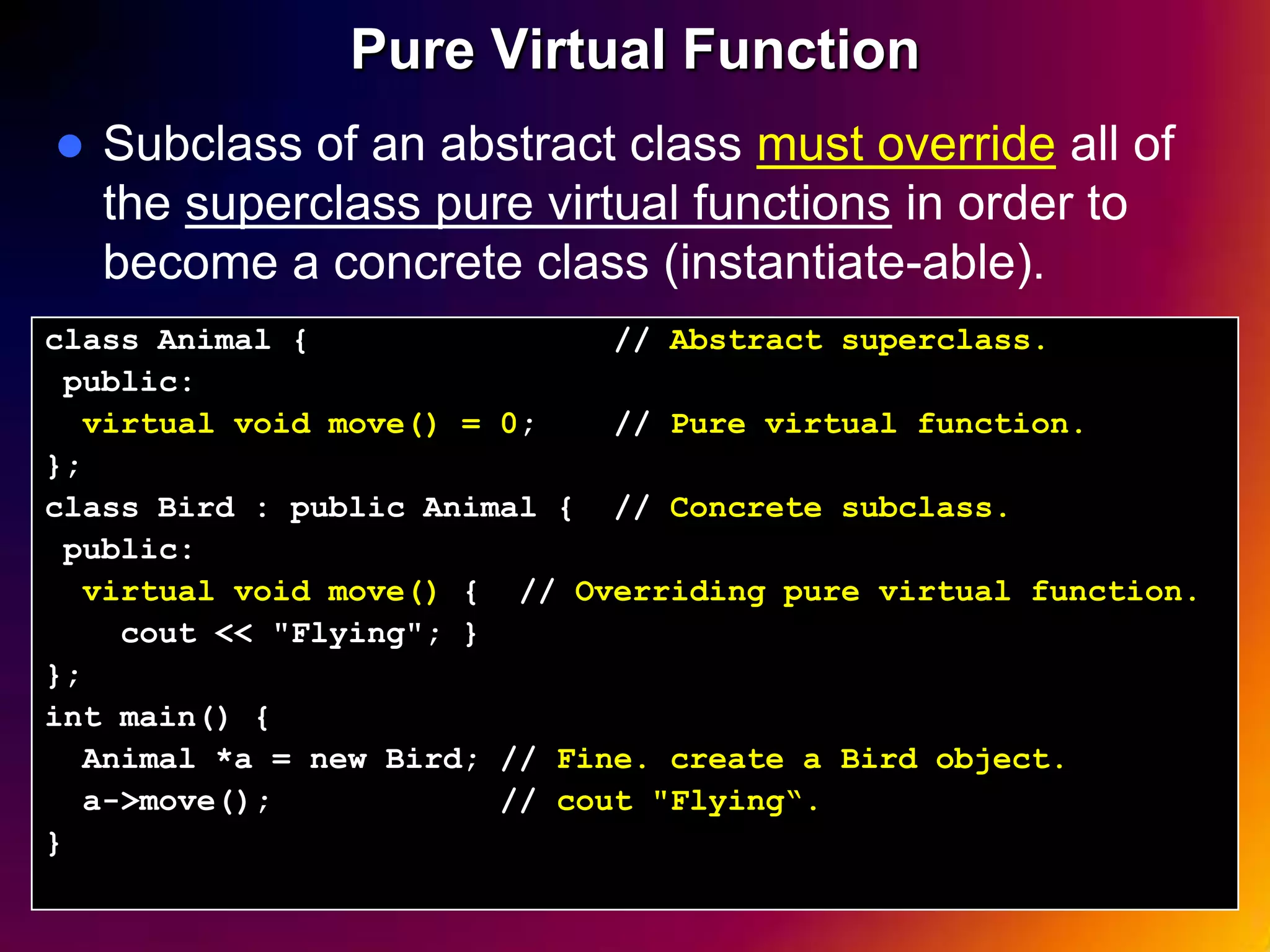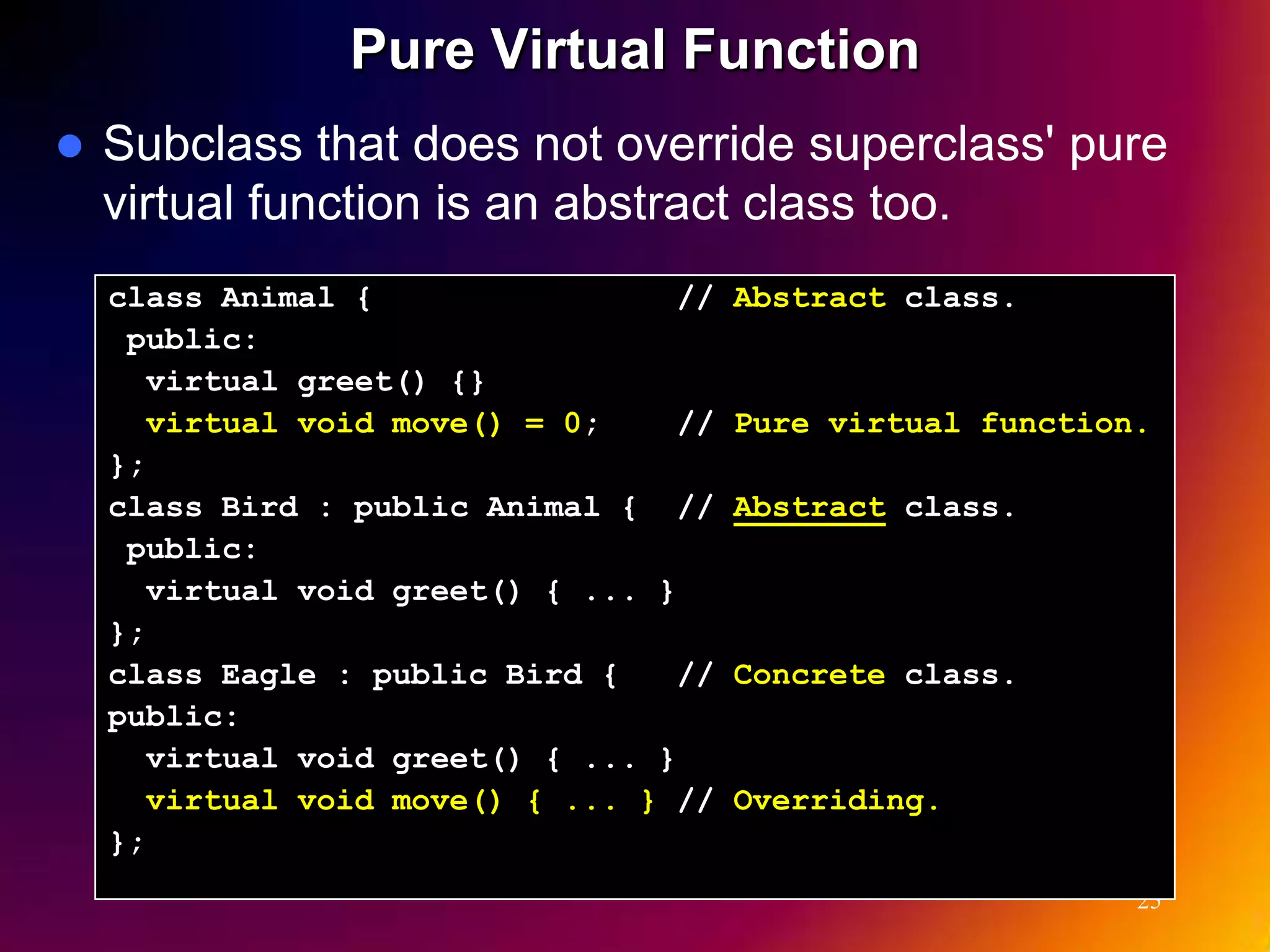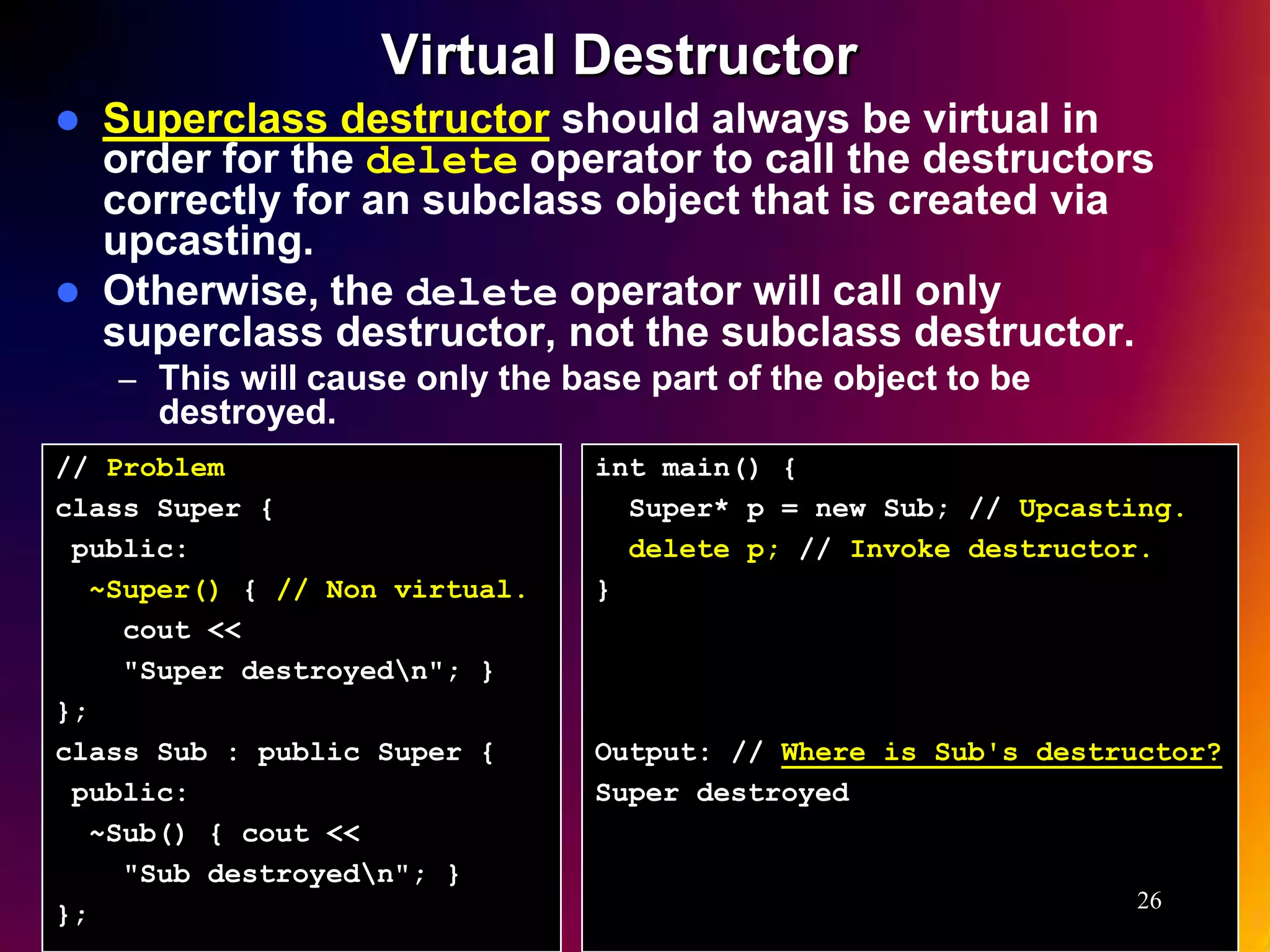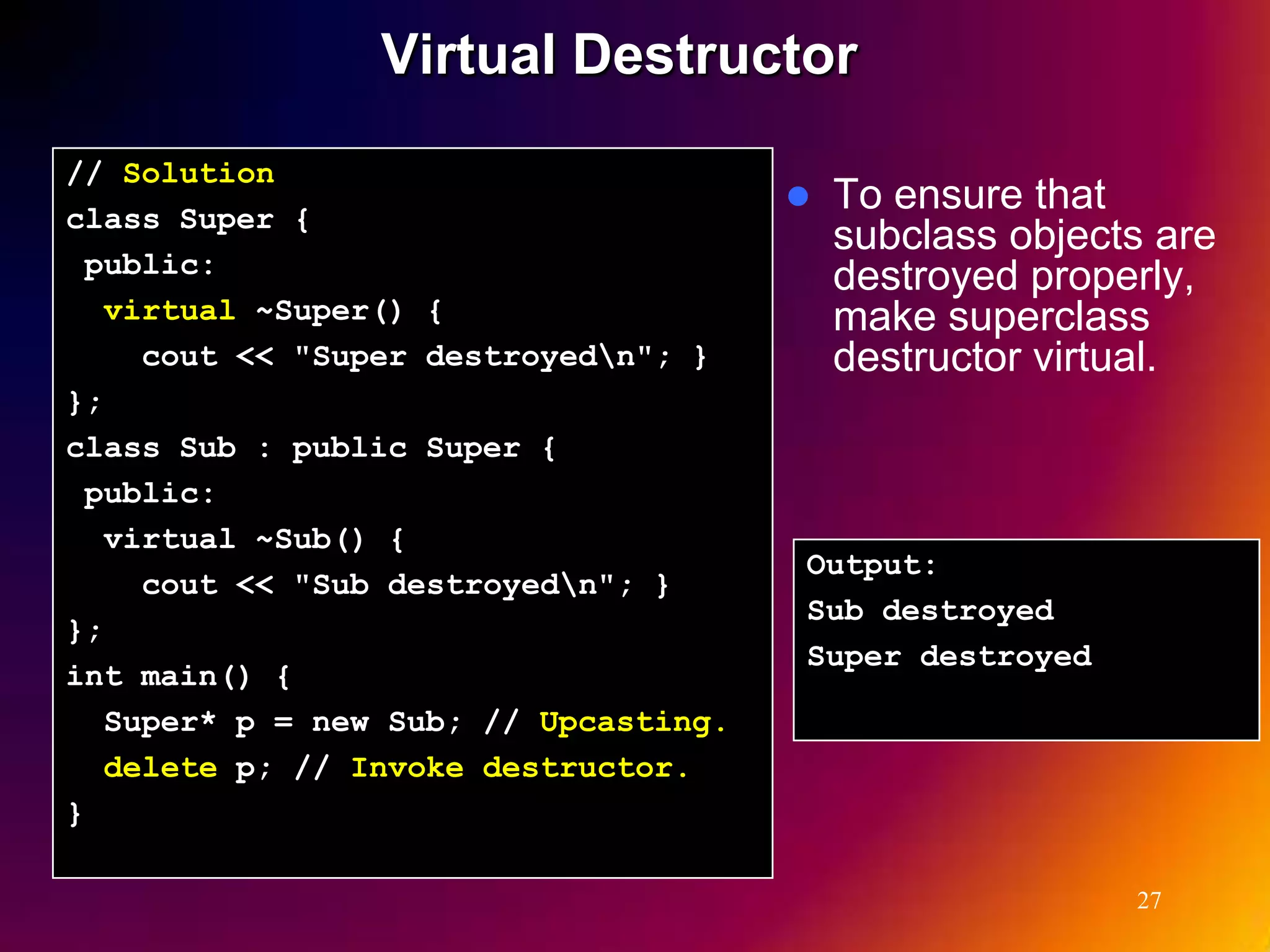This document discusses static and dynamic polymorphism in C++. Static polymorphism is determined at compile-time based on the variable type, while dynamic polymorphism uses virtual functions and runtime binding. Making superclass functions virtual allows subclasses to override them and have the correct implementation called through upcasting. Abstract classes with pure virtual functions force subclasses to implement common behaviors.

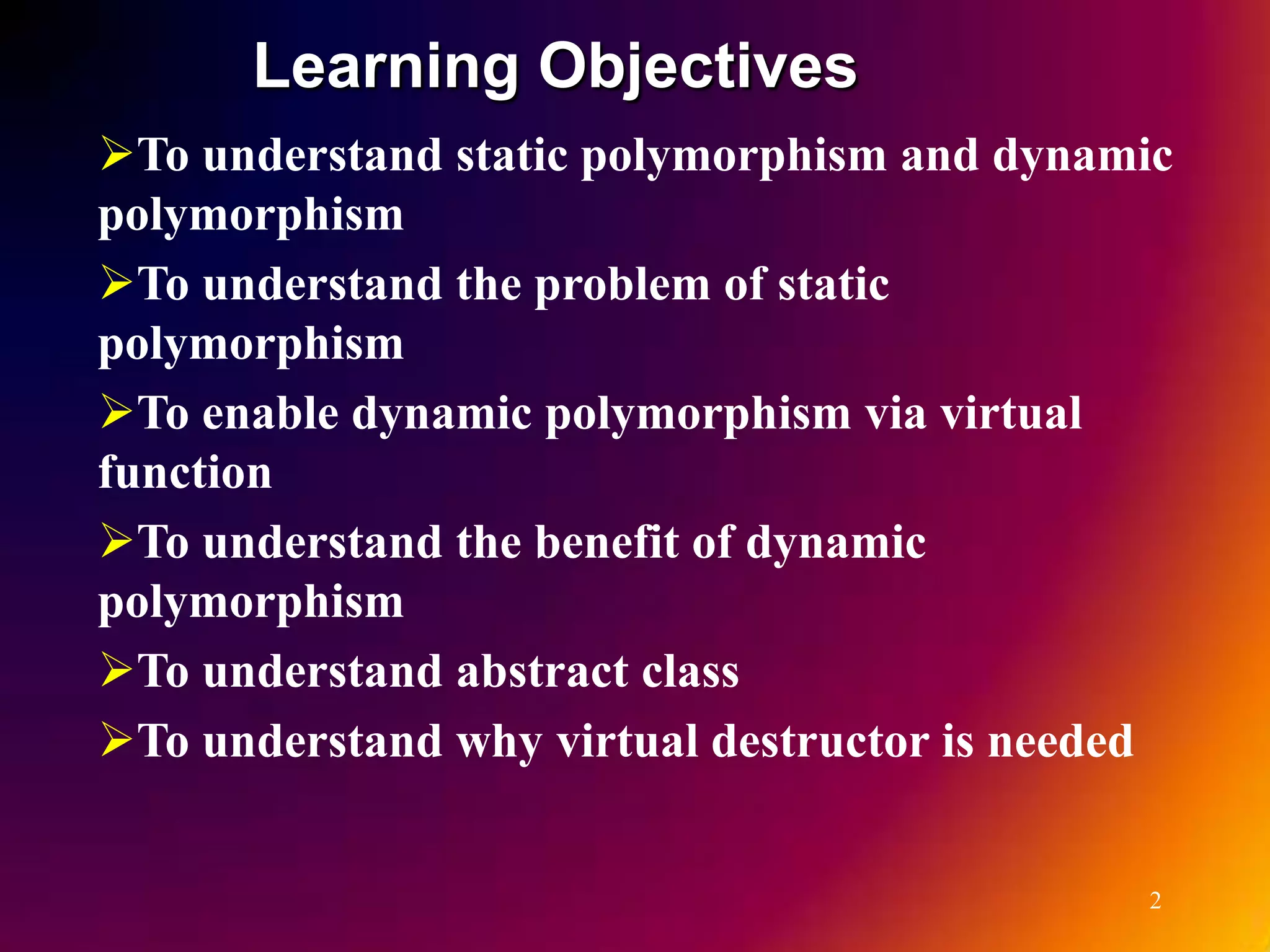

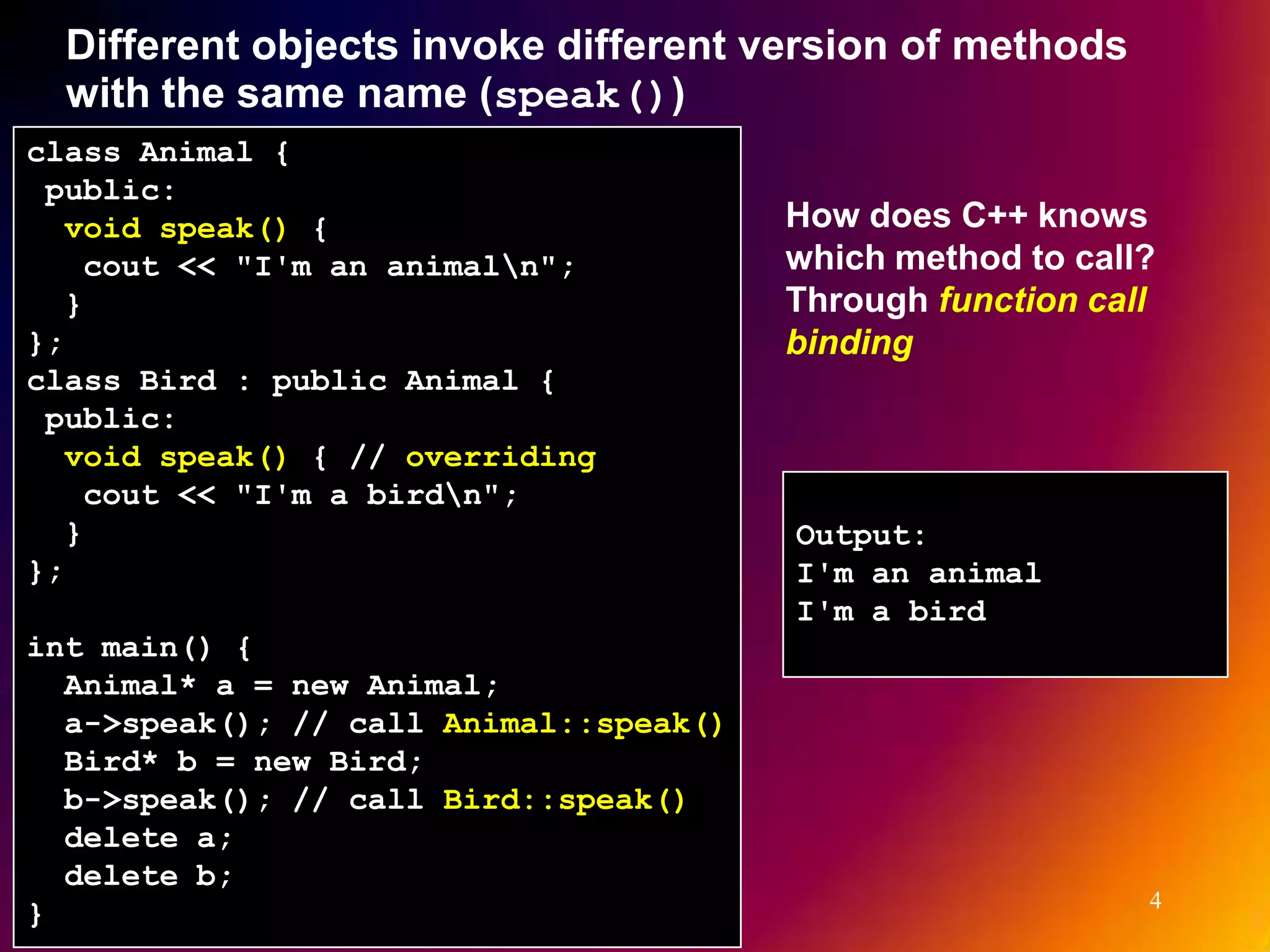
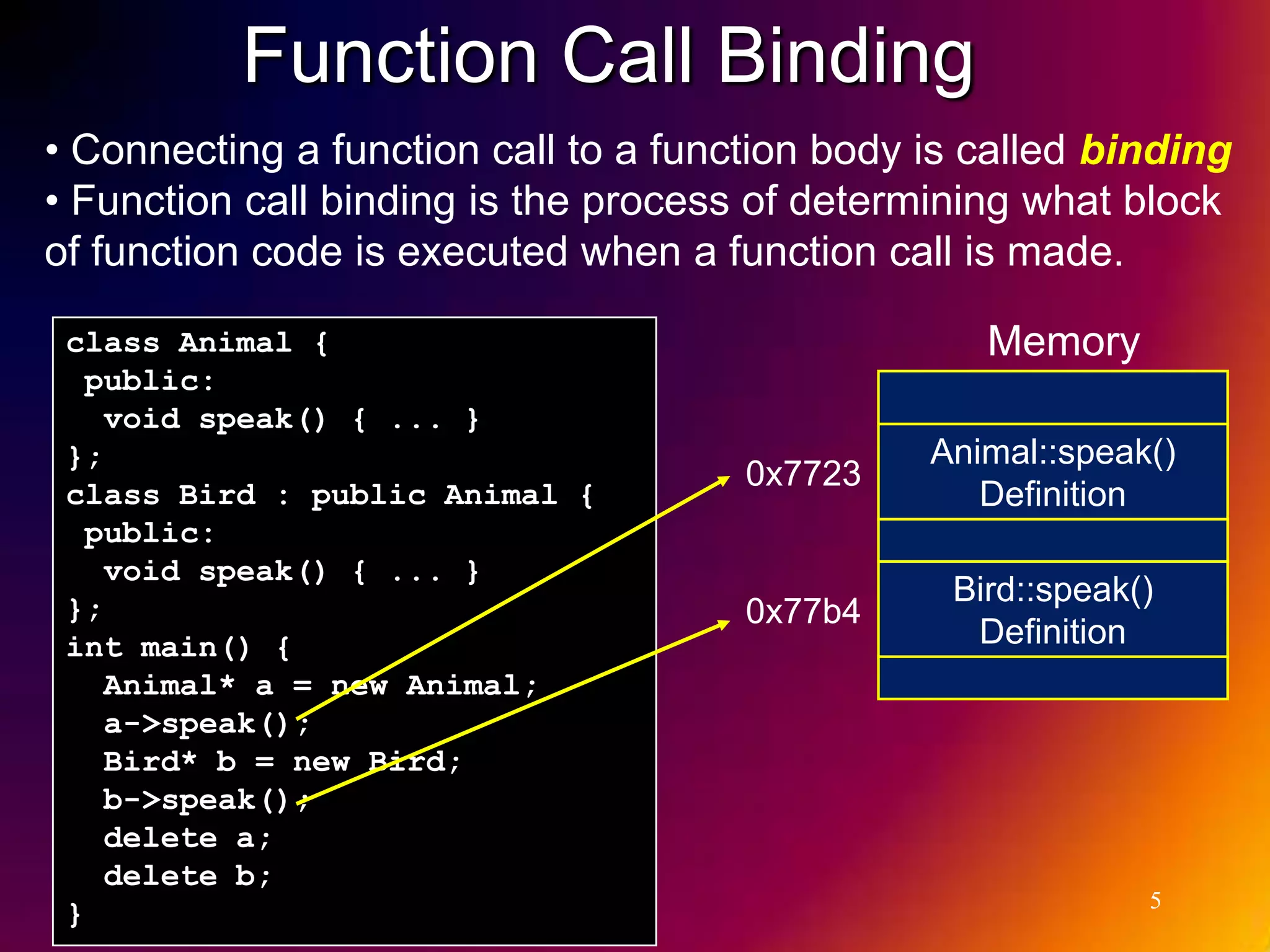

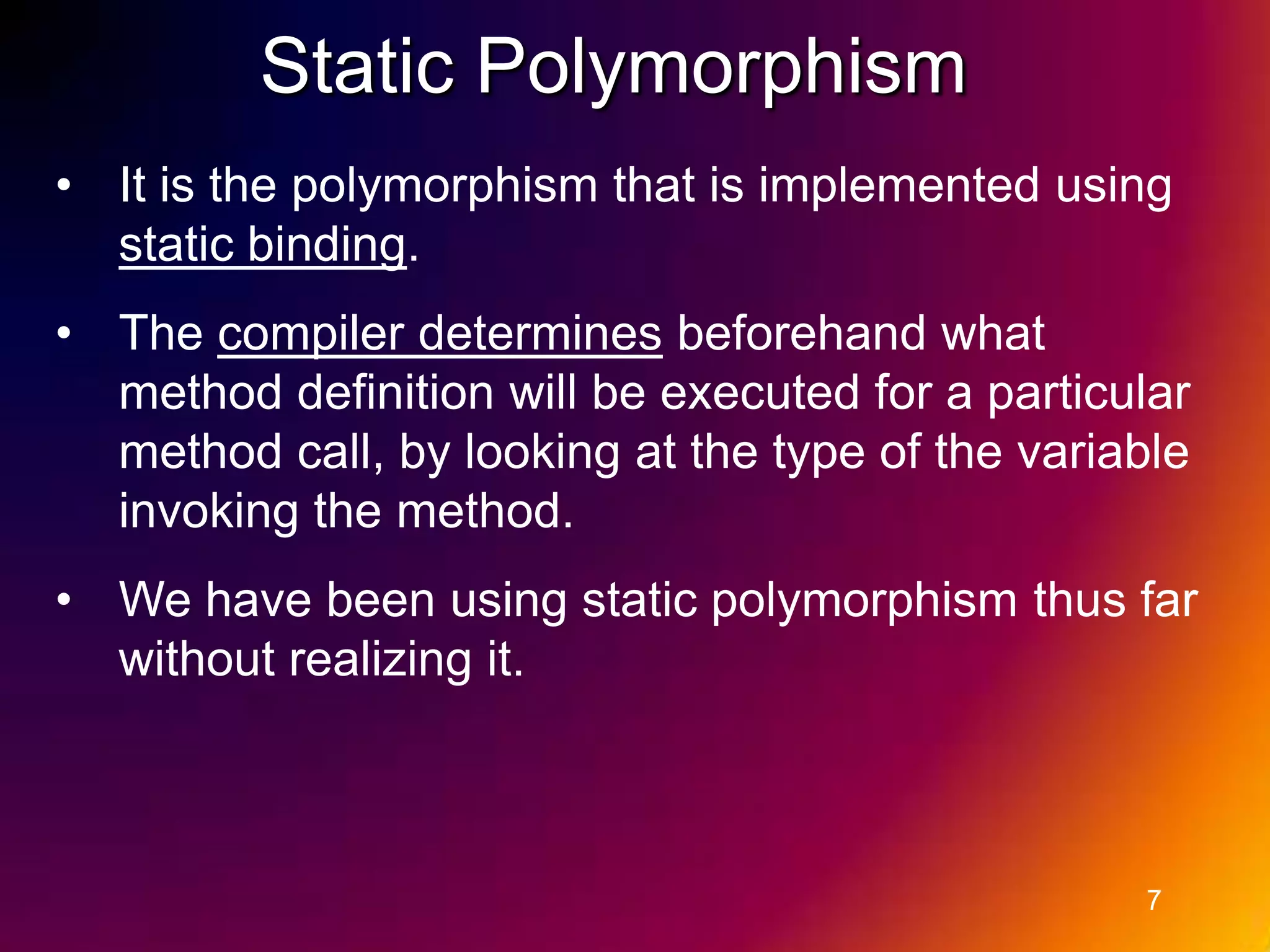
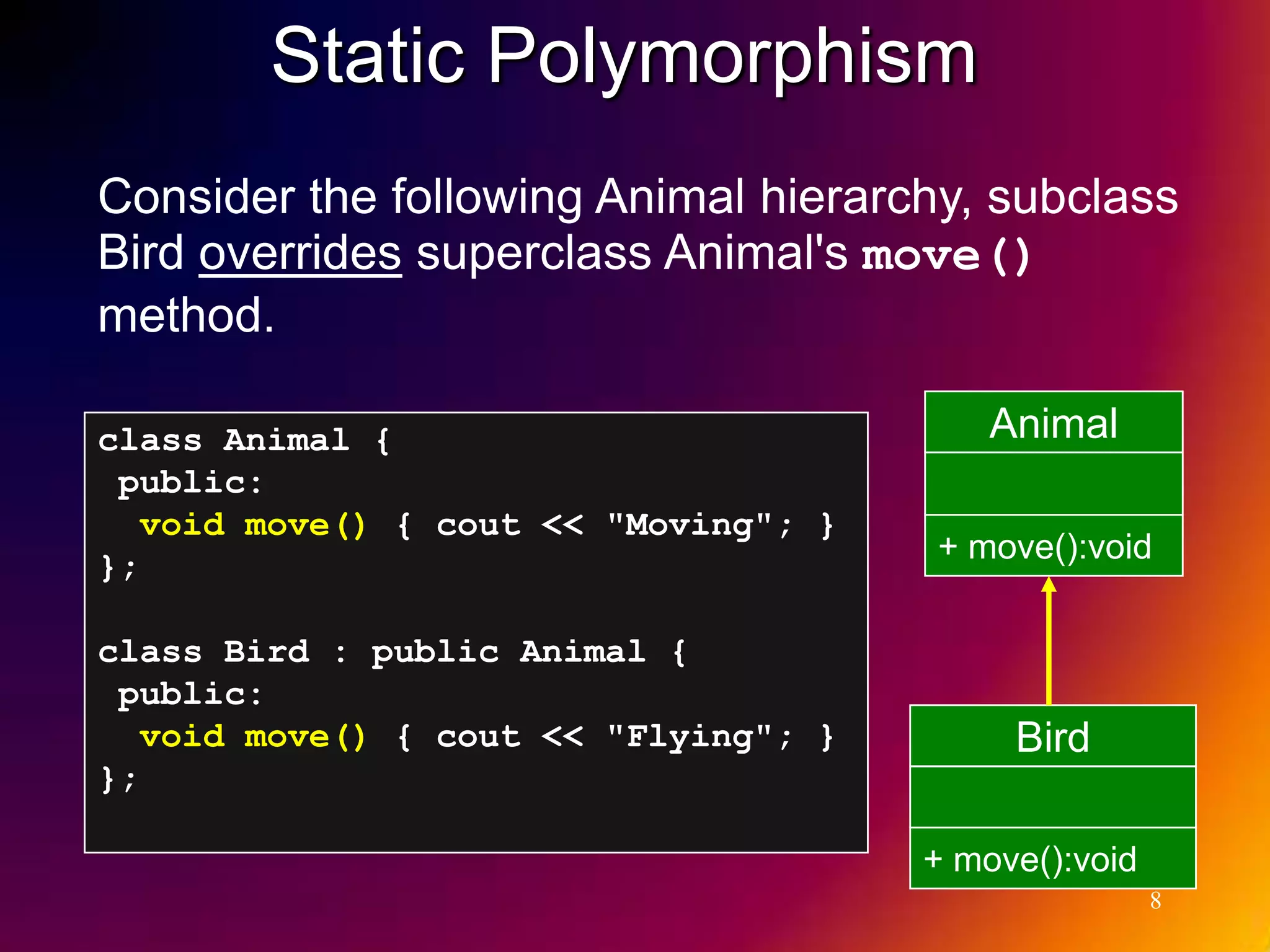
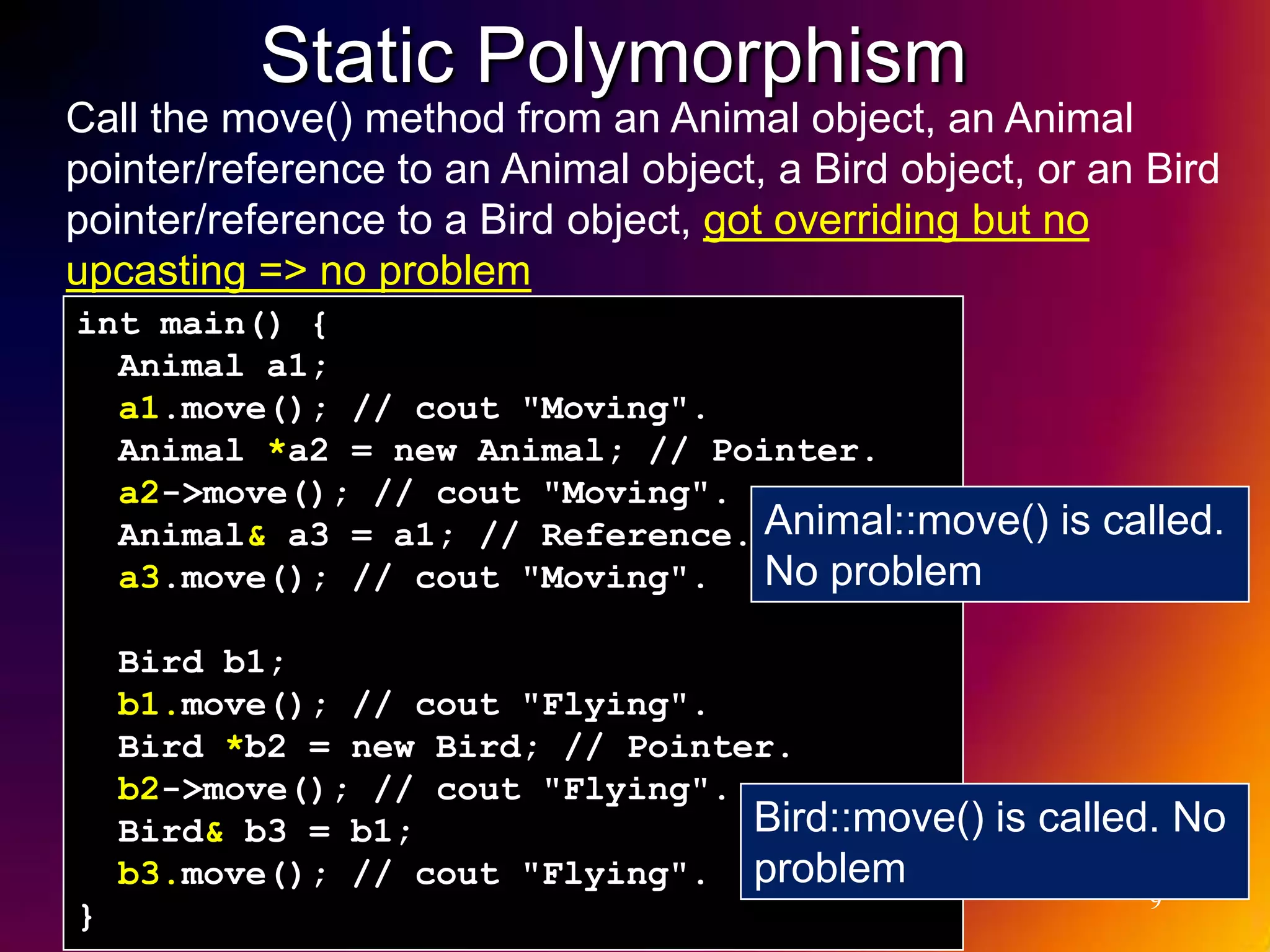
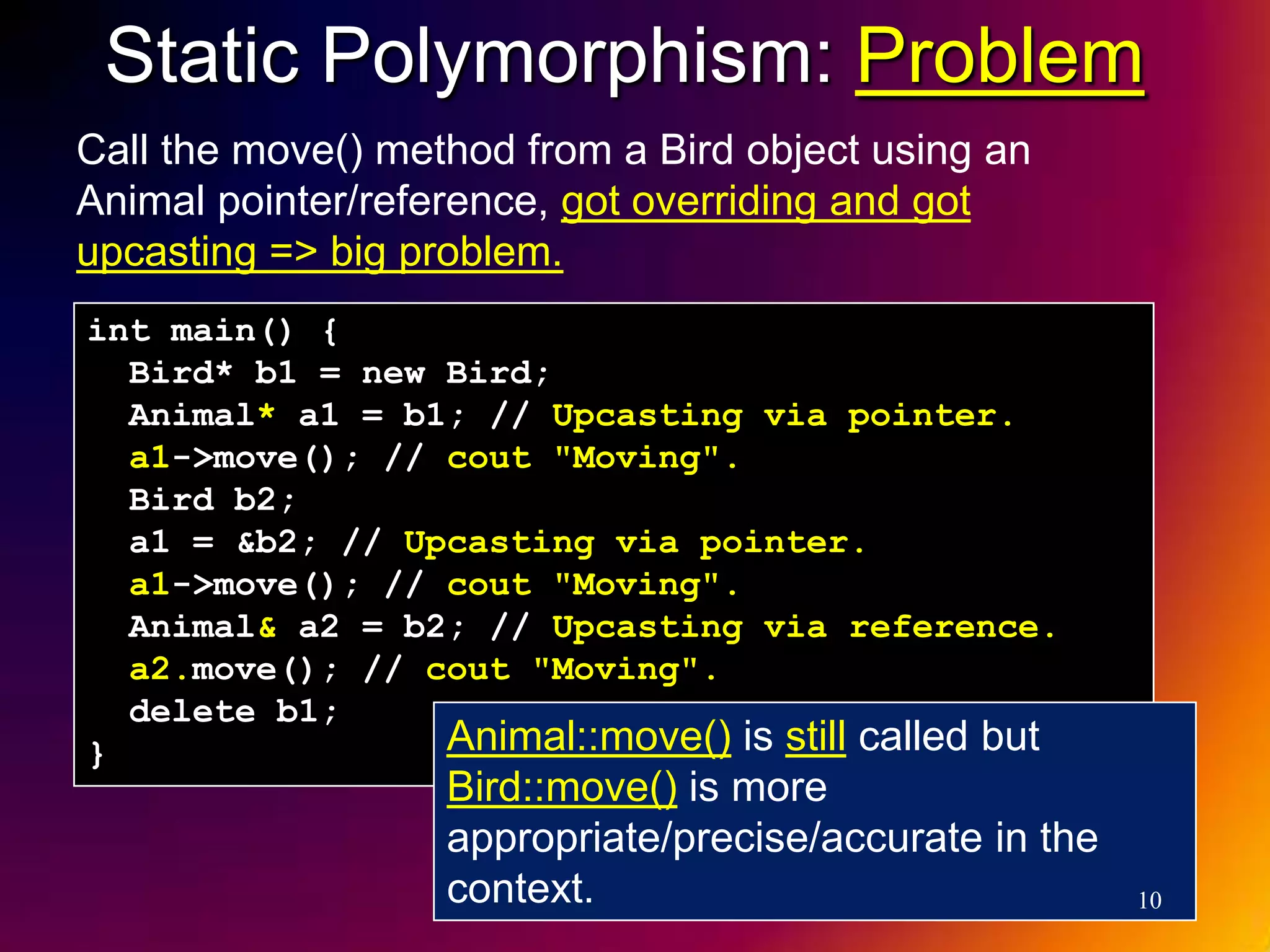

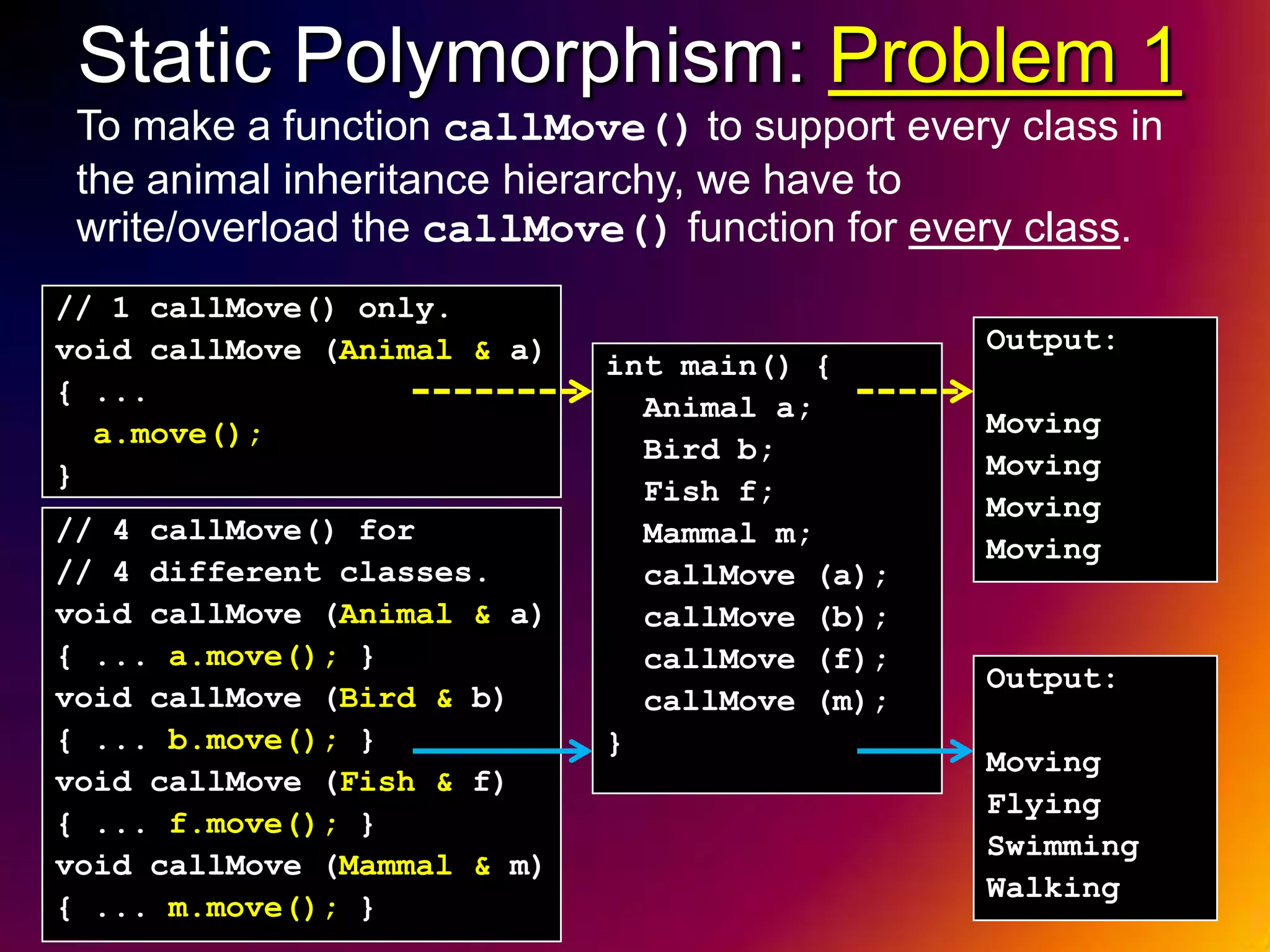
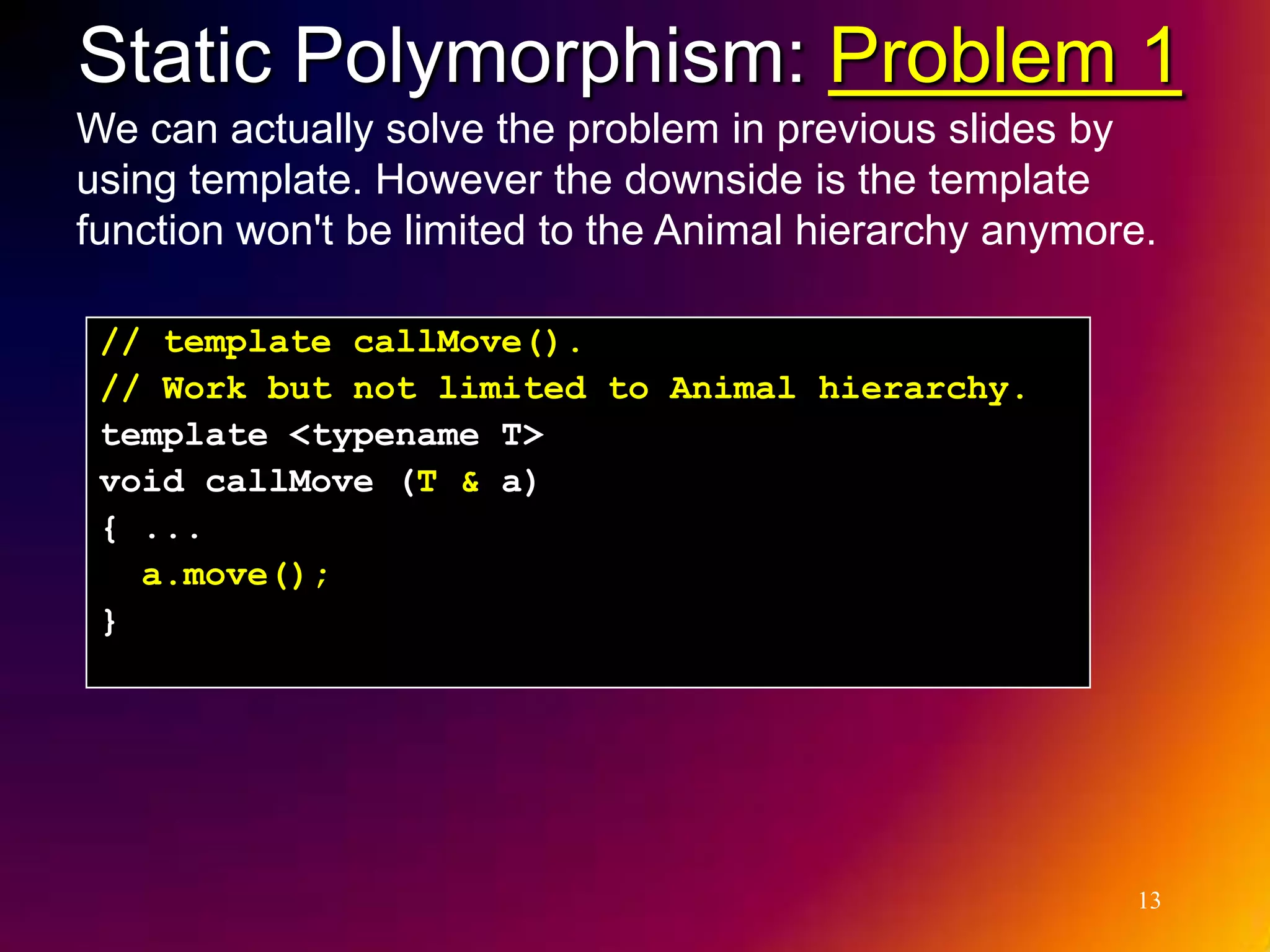
![Static Polymorphism: Problem 2 We cannot use one for loop to call the correct version of move() method in an array/vector of objects from Animal hierarchy. Current output: int main() { Moving // Array of different animals. Moving Animal* a[4] = {new Animal, Moving new Bird, Moving new Fish, new Mammal}; Preferred output: for (int i = 0 ; i < 4; i++) a[i]->move(); Moving for (int i = 0 ; i < 4; i++) Flying delete a[i]; Swimming } Walking 14](https://image.slidesharecdn.com/lecture04-polymorphism-130120010842-phpapp02/75/Lecture04-polymorphism-14-2048.jpg)
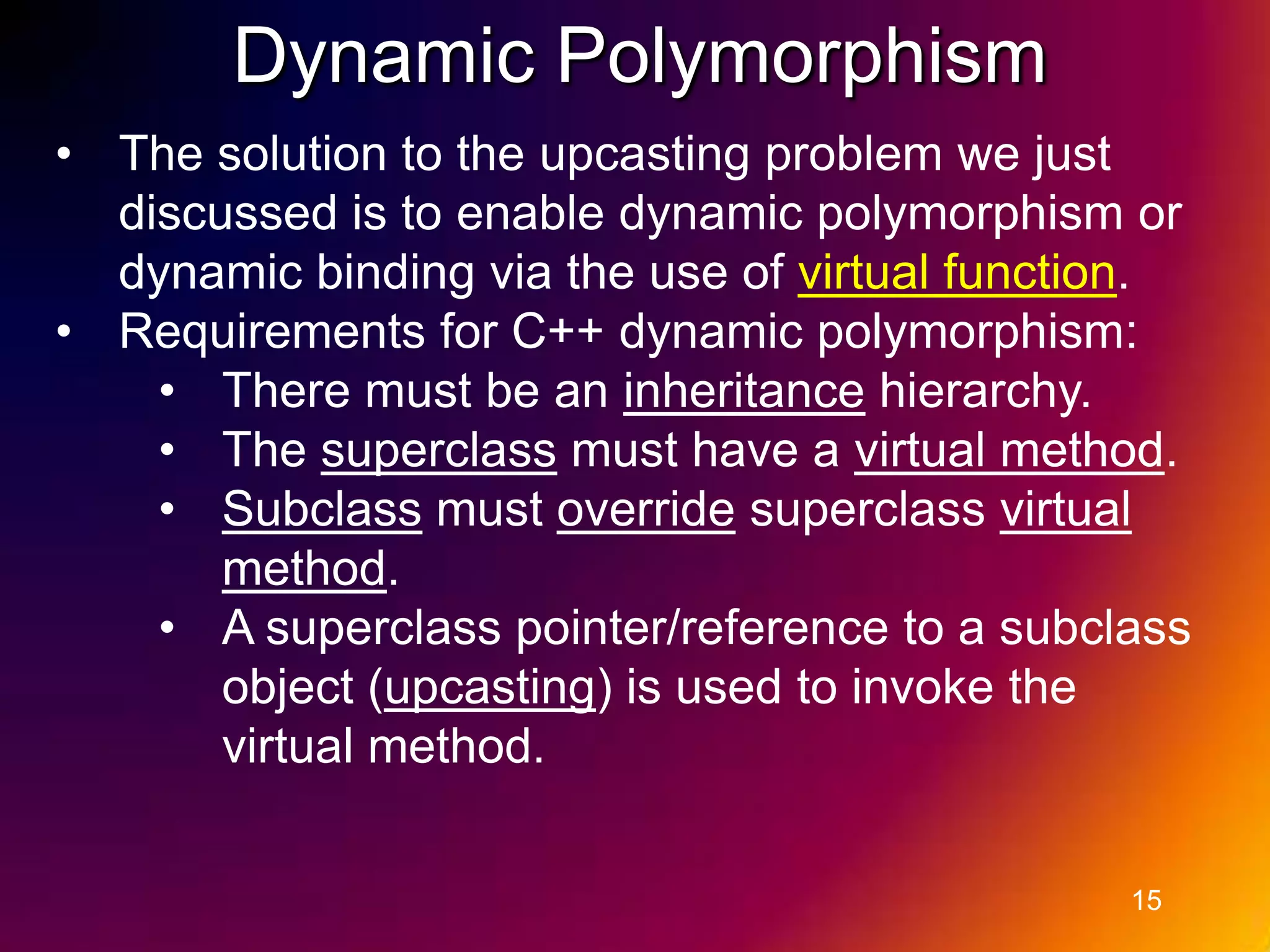

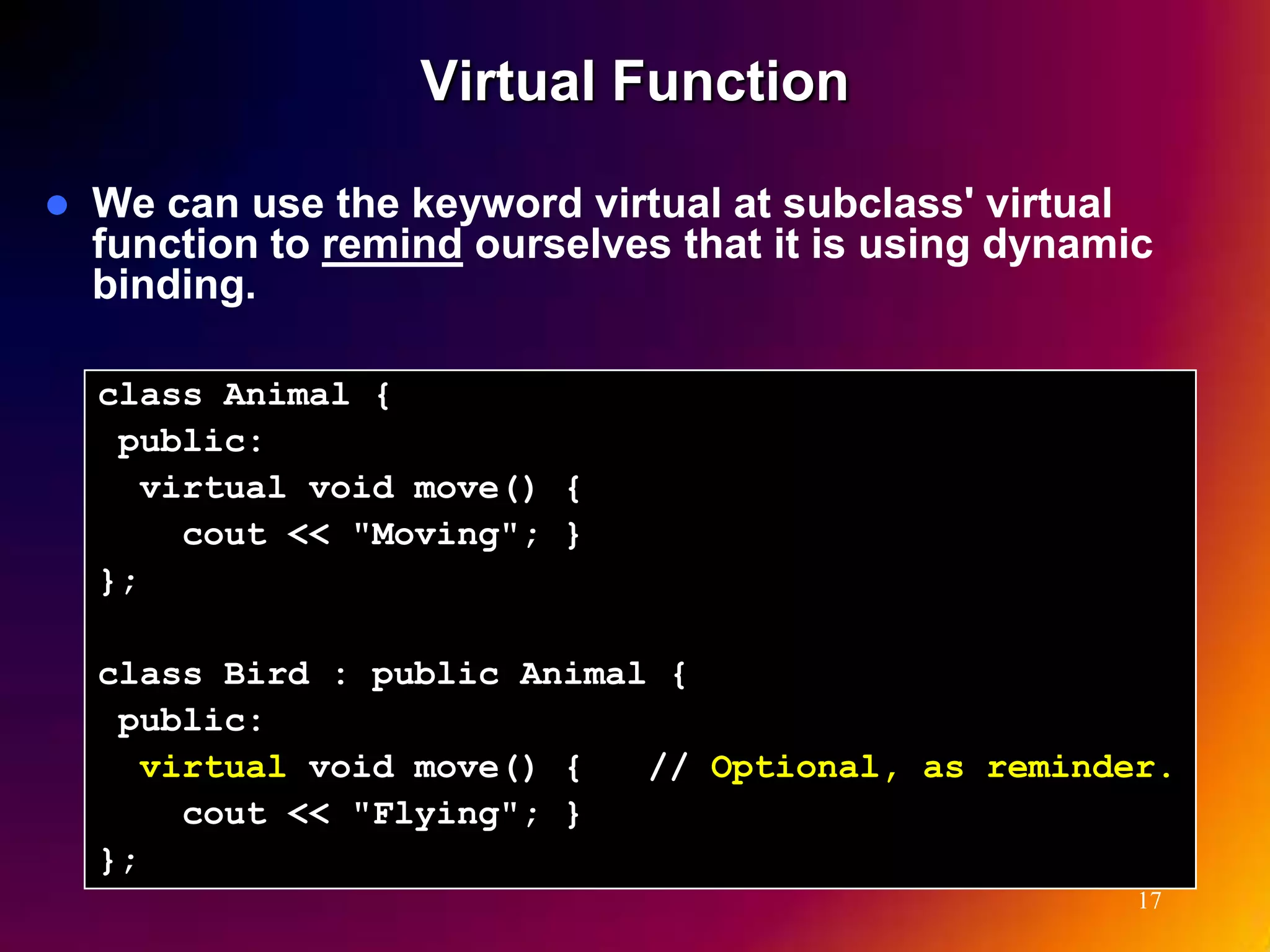


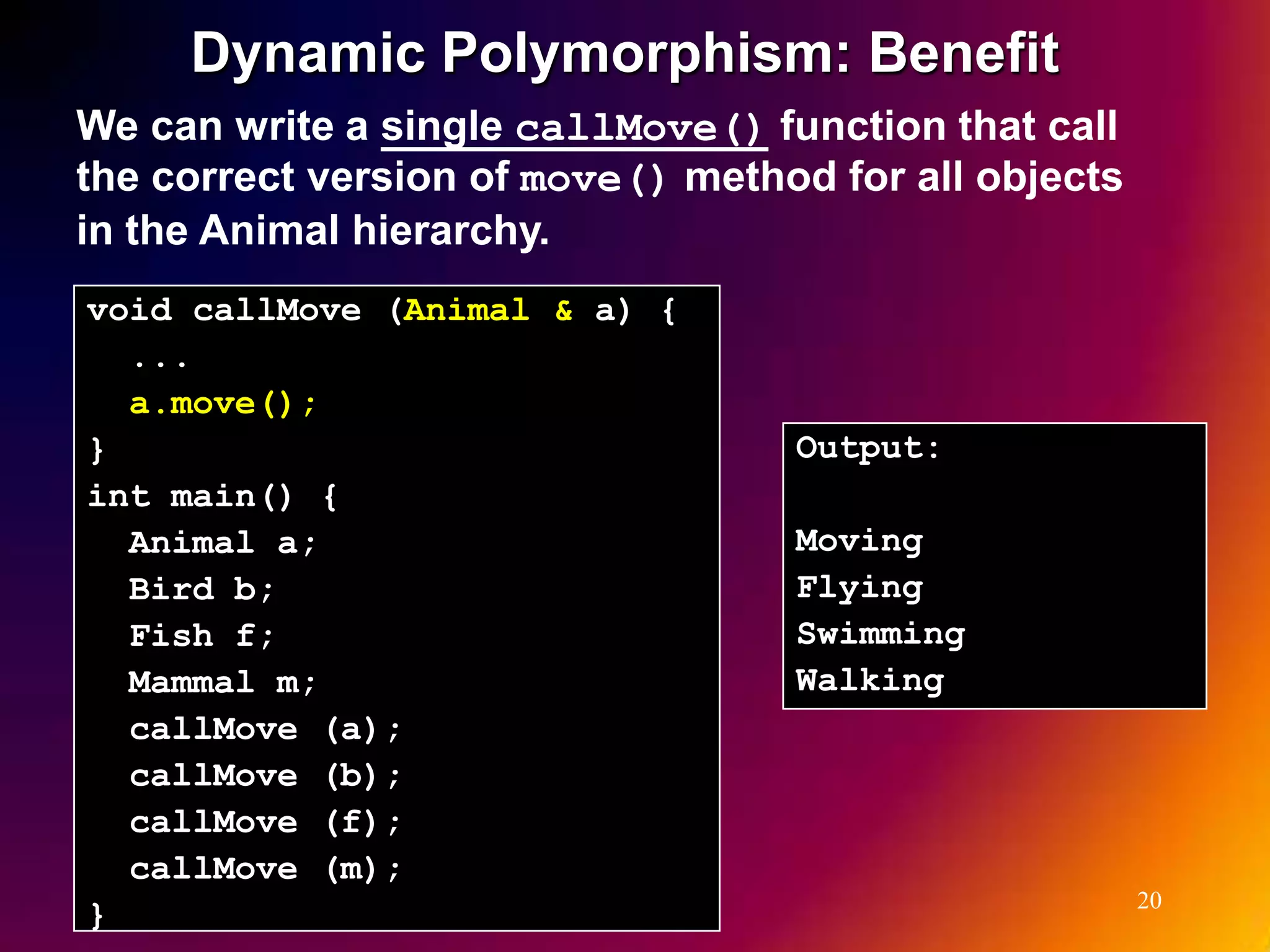
![Dynamic Polymorphism: Benefit We can also write a loop to call the correct version of move() method for all objects in the Animal hierarchy. int main() { // Array of different animals. Output: Animal* a[4] = {new Animal, new Bird, Moving new Fish, Flying new Mammal}; Swimming for (int i = 0 ; i < 4; i++) Walking a[i]->move(); for (int i = 0 ; i < 4; i++) delete a[i]; } 21](https://image.slidesharecdn.com/lecture04-polymorphism-130120010842-phpapp02/75/Lecture04-polymorphism-21-2048.jpg)
